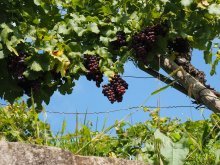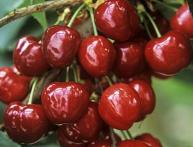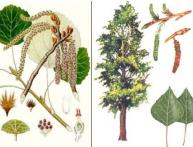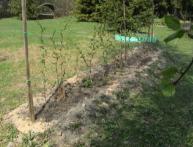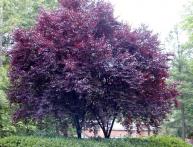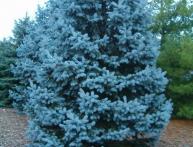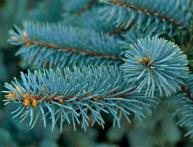How to properly process and care for grapevines
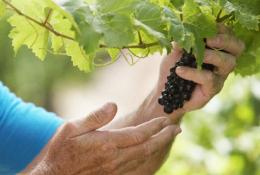
With good care, the grapevine will produce a full harvest. After picking the berries, the vine should be prepared for winter rest. This should be done in the fall. Grapes require special attention especially during the period of their development. Caring for grapes consists of watering, feeding, pruning and processing of fruit plants.
Content:
Grapevine: pruning and feeding
For good development of the vine and ripening of the fruits, pruning should be carried out regularly. It is necessary to carefully examine the entire bush for diseased and damaged areas. If there are any, they should be cut off. It is advisable to perform this procedure in the fall, when the leaves have already fallen. If you prune before the specified time, there will be insufficient nutrients for the plant to survive the winter well.
After removing diseased and dried branches, they must be collected and burned to prevent the spread of pest larvae. All shoots that have reached 20 cm should be trimmed. If they have stretched to 30 cm, then they should be trimmed by 10%. All side shoots should also be trimmed. They should have no more than two leaves.
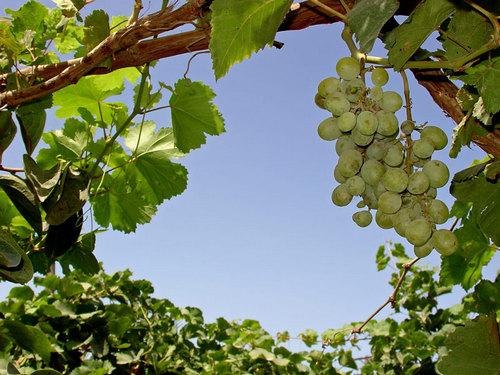
After pruning, be sure to treat the cut areas with garden varnish to prevent rotting. It is not advisable to trim shoots in the spring, since liquid may ooze at the cut site.It will leave, and with it the nutrients.
In case of emergency, pruning is carried out in early spring at a temperature of at least 5 degrees. When the berries begin to form and ripen, the bushes shoot and pinch out old shoots. You should also remember to clean the vine of excess leaves.
The vine becomes very weakened after harvest, so it should be well fed with fertilizers. Fruiting depends on how fertilizing is done. It is best to fertilize with organic fertilizers – manure or compost. There is no need to dig up the soil, you can get by with mulching. Wood ash can be added to organic matter. Grapes should be fed once every 3-4 years. In the fall, feed with potassium-phosphorus fertilizer. Potassium and superphosphate are taken in equal quantities. For severely depleted soil, it is recommended to add the following components: boric acid (2.5 g), ammonium (5 g), zinc sulfate (2 g), manganese (2.5 g).
How to water a grapevine
Watering the vine is a very important activity when caring for the grapevine, on which the quantity and quality of the harvest depends. When the berries begin to ripen, the grape bush should be watered more than usual. However, you need to be careful here, since excess and lack of moisture can affect the taste and appearance of the vine. In summer, you need to water regularly. From the timing of ripening varieties grapes will depend on the amount of watering. Late grape varieties are watered at least 4 times. This is due to the long growing season. The average variety needs to be watered at least three times per season: after the leaves bloom, the berries set and they begin to ripen.
Video about caring for grapevines:
It is recommended to water early grape varieties at least twice throughout the summer, namely: after the vines flower and the berries appear. It is imperative to water the grapevine in the fall. Proper watering of grapes should be done as follows: small grooves should be dug around the vine. This is done so that the water does not spread and is retained in the holes. After this, the bush needs to be slightly loosened. Under no circumstances should you pour water under the root of a grape. You can also make holes near each trunk. The top layer of soil is removed around to a depth of no more than 20 cm. Then water according to the size of the dug hole. After the water is absorbed, cover the top with soil. This is done so that the soil does not dry out for a long time. It is not recommended to water during flowering and harvesting. Petals may fall off and berries may crack due to excess moisture.
Processing and covering grapes
Process The grapevine should be treated against possible pests after harvest, in the fall. This procedure is performed before covering the vine for the winter. The simplest and most accessible means for treating leaves is a soda-salt solution. Add 10 large spoons of salt and 5 spoons of soda to a 10-liter bucket of water. Mix everything well and treat the bush with a spray bottle. If mildew spots are observed on the leaves, remove the diseased shoots and treat with fungicidal preparations:
- Delan
- Acrobat
- Cartocide
- Mikal
- Novozir
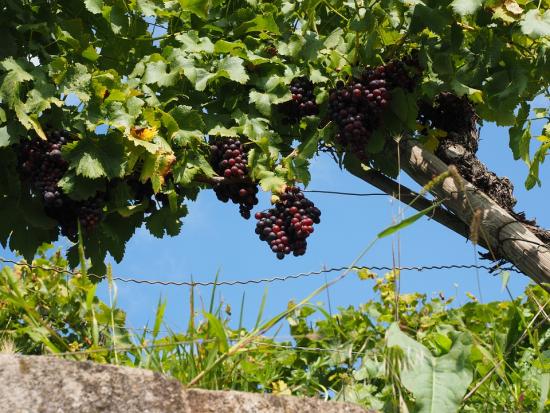
If powdery mildew is detected, it is necessary to use sulfur preparations: Falcon, Fundazol, Topaz, Amistar, etc. To free the vine against ticks minting is carried out together with pinching. If some leaves on the bushes are half curled and look sickly, then they need to be collected and burned.After this, treat with insecticides in combination with fungicidal agents. Before covering the vineyard for the winter, it is necessary to treat the vine with a 3% solution of copper sulfate. As soon as the temperature drops below -5 degrees, you can begin to cover the vine. There are various ways to cover a grapevine. The most suitable option for insulating a bush is to cover it with pine or spruce branches.
In this case, air flows well through the spruce branches, which will prevent rotting. In regions with harsh winters, the vine is tilted and covered with earth. You can cover the vineyard with various materials: paper, straw, old blanket, slate, film. However, you should carefully consider the choice of covering material in the form of polyethylene. Temperature changes are common in winter. As a result, moisture will collect inside, which can cause mold and various diseases. If the winter is warm, then fresh air should be allowed into the protective structure. Otherwise, the buds will begin to bloom. Proper implementation of the shelter will protect the vine from the winter cold. Subject to certain principles of care grape vines, you can achieve a high yield.
Interesting information about the vegetable garden


